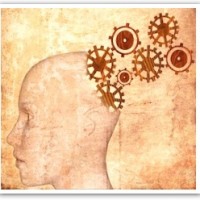Neuroscience wants to be the answer to everything. It isn’t., by Roger Scruton
There are many reasons for believing the brain is the seat of consciousness. Damage to the brain disrupts our mental processes; specific parts of the brain seem connected to specific mental capacities; and the nervous system, to which we owe movement, perception, sensation and bodily awareness, is a tangled mass of pathways, all of which end in the brain. This much was obvious to Hippocrates. Even Descartes, who believed in a radical divide between soul and body, acknowledged the special role of the brain in tying them together.
The discovery of brain imaging techniques has given rise to the belief that we can look at people’s thoughts and feelings, and see how ‘information’ is ‘processed’ in the head. The brain is seen as a computer, ‘hardwired’ by evolution to deal with the long vanished problems of our hunter-gatherer ancestors, and operating in ways that are more transparent to the person with the scanner than to the person being scanned. Our own way of understanding ourselves must therefore be replaced by neuroscience, which rejects the whole enterprise of a specifically ‘humane’ understanding of the human condition.
In 1986 Patricia Churchland published Neurophilosophy, arguing that the questions that had been discussed to no effect by philosophers over many centuries would be solved once they were rephrased as questions of neuroscience. This was the first major outbreak of a new academic disease, which one might call ‘neuroenvy’. If philosophy could be replaced by neuroscience, why not the rest of the humanities, which had been wallowing in a methodless swamp for far too long? Old disciplines that relied on critical judgment and cultural immersion could be given a scientific gloss when rebranded as ‘neuroethics’, ‘neuroaesthetics’, ‘neuromusicology’, ‘neurotheology’, or ‘neuroarthistory’ (subject of a book by John Onians). Michael Gazzaniga’s influential study, The Ethical Brain, of 2005, has given rise to ‘Law and Neuroscience’ as an academic discipline, combining legal reasoning and brain imagining, largely to the detriment of our old ideas of responsibility. One by one, real but non-scientific disciplines are being rebranded as infant sciences, even though the only science involved has as yet little or nothing to say about them.
Read the complete article in CERC.
